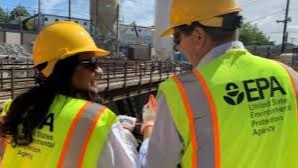
If You Change Your SPCC Plan Template, Be Mindful of Your P.E. Seal.
John K. Carroll III
Associate Managing Director at Witt O'Brien's, LLC, Part of the Ambipar Group
(This article was written without AI tools, i.e., ChatGPT.)
?
I spent last week at Clean Gulf in Houston, Texas, and had some great conversations, including one about the use of Professional Engineer (P.E.) Seals in Spill Prevention, Control, and Countermeasure (SPCC) Plans. The conversation was not the typical one concerning what must be sealed, who can seal it, what a technical or non-technical change is, etc. The question focused on whether you could migrate an SPCC Plan into another template and keep the prior seal.
The debate centered on the idea that if you don’t change the data itself, but change the order of the data, putting it in a new format, could you bring over the previous P.E. seal? The argument being that nothing material has changed, so it is just an administrative change, and as such no P.E. involvement is required. The SPCC regulations do not address this, nor have I seen any supplementary SPCC guidance. I have been told by the EPA in the past this isn’t allowed, but nothing formal has been issued. The rule solely says that a P.E. must seal the SPCC Plan (and appropriate amendments using good engineering practices).
This is not a regulatory SPCC question, rather it pertains to what is required by state law governing P.E.s. All state P.E. boards have provisions stating that altering anything governed by a P.E. voids the P.E. seal without prior permission. Below are examples from Texas and New York for context.
Texas: An engineer, as a third party, may alter, complete, correct, revise, or add to the work of another engineer when engaged to do so by a client, provided: the client furnishes the documentation of such work submitted to the client by the first engineer. The second engineer of the engagement immediately upon acceptance of the engagement notifies the first engineer in writing. Any work altered, completed, corrected, revised, or added to shall have a seal affixed by the second engineer. The second engineer then becomes responsible for any alterations, additions or deletions to the original design including any effect or impact of those changes on the original engineer's design. Refer to Board Rule 137.33(i).
New York: Altering a document that already has a PE seal generally invalidates the seal, meaning the original engineer is no longer considered responsible for the modified document and any changes made; if significant alterations are made, the document should be re-sealed by the PE making the changes, or a new PE should review and seal the revised version depending on the jurisdiction and situation.
?
What this means is that if you choose to migrate an SPCC Plan to a new template, you must either get expressed permission from the prior P.E. to use their seal in a new template or treat it as a new plan. Witt O’Brien’s has not called on every P.E. board about this question, but all we have spoken to have stated that alternating an original document governed by a P.E. seal constitutes a change requiring prior consent.
Changing templates is common in the oil and gas industry, but the bottom line is that if your company is planning to move your current SPCC Plan to a new template and doesn’t want to treat it like a new plan, you need to get permission from the original P.E. to use their seal on a new template. Absent that permission, you must treat it as a new plan and follow standard SPCC protocols.
I welcome any comments by P.E.s on this topic: additional guidance, real-world examples, etc.
?
For a complete listing of archived articles and compliance insights, click here . Past articles cover training requirements, clarification of additional unclear elements within the above rules, and more.
We are here to help solve your compliance questions and challenges. If you need compliance assistance or have questions, please email John K. Carroll III ([email protected] ), Associate Managing Director – Compliance Services, or call +1 954-625-9373.
Witt O’Brien’s:
Personal Note: Struggling with suicidal thoughts or know someone who is displaying worrisome characteristics? If yes, the American Foundation for Suicide Prevention (AFSP) has excellent resources to help: a crisis hotline (simply call/text 988), a counselor directory, resources to navigate, etc. Click here to go to their website.